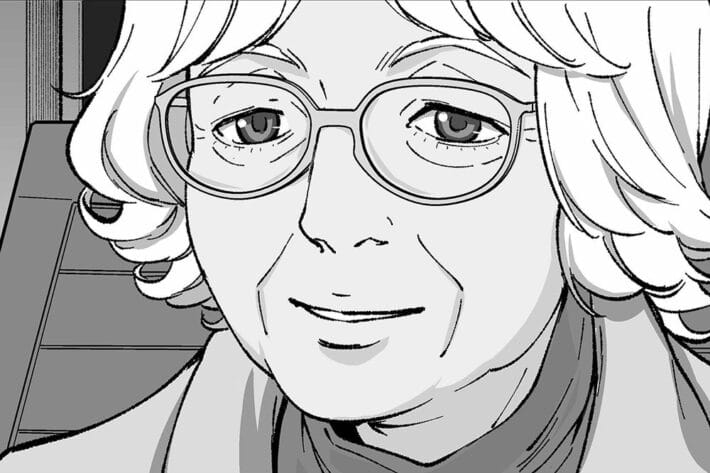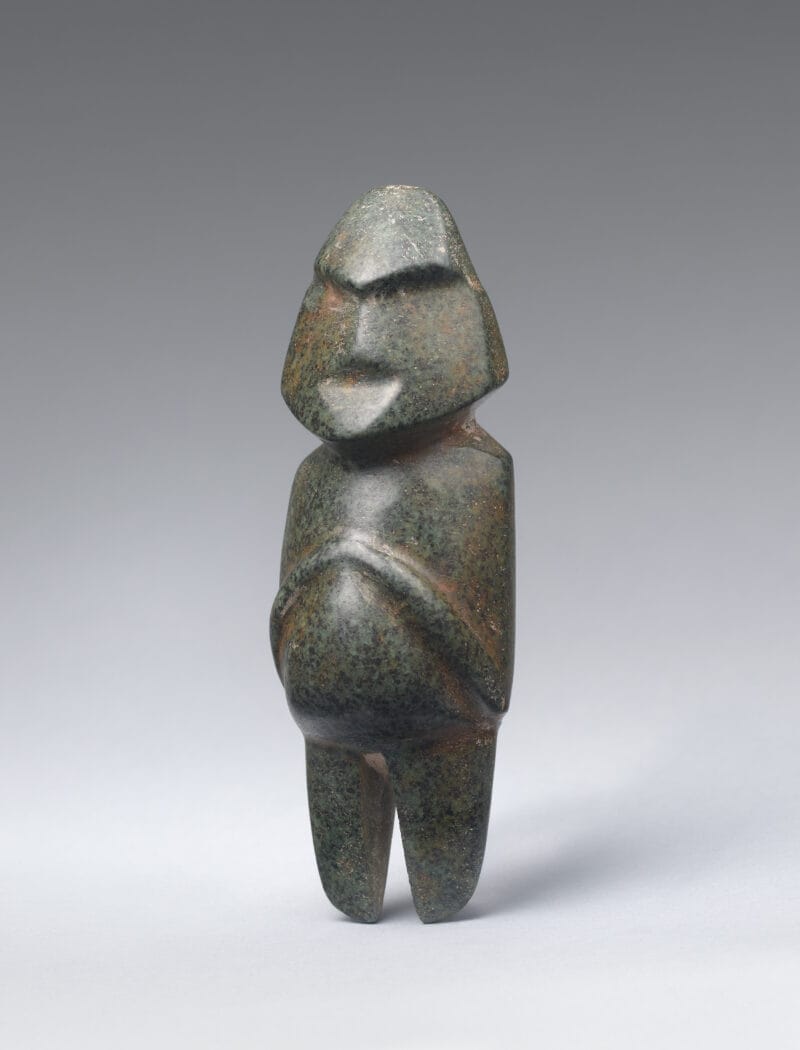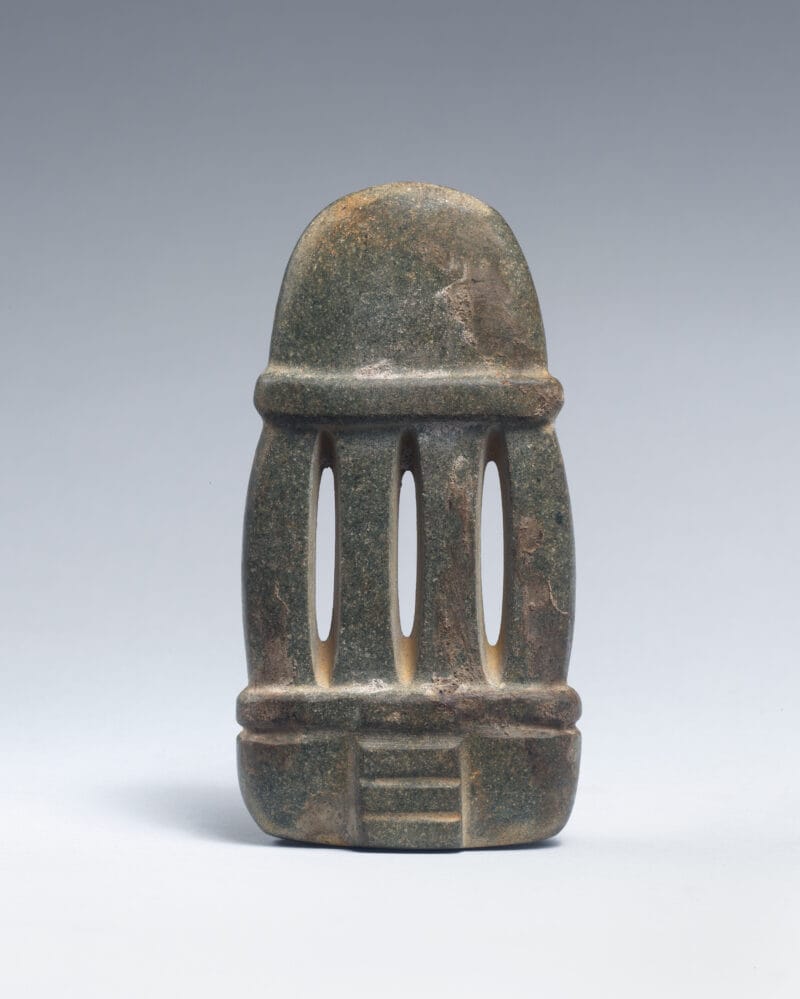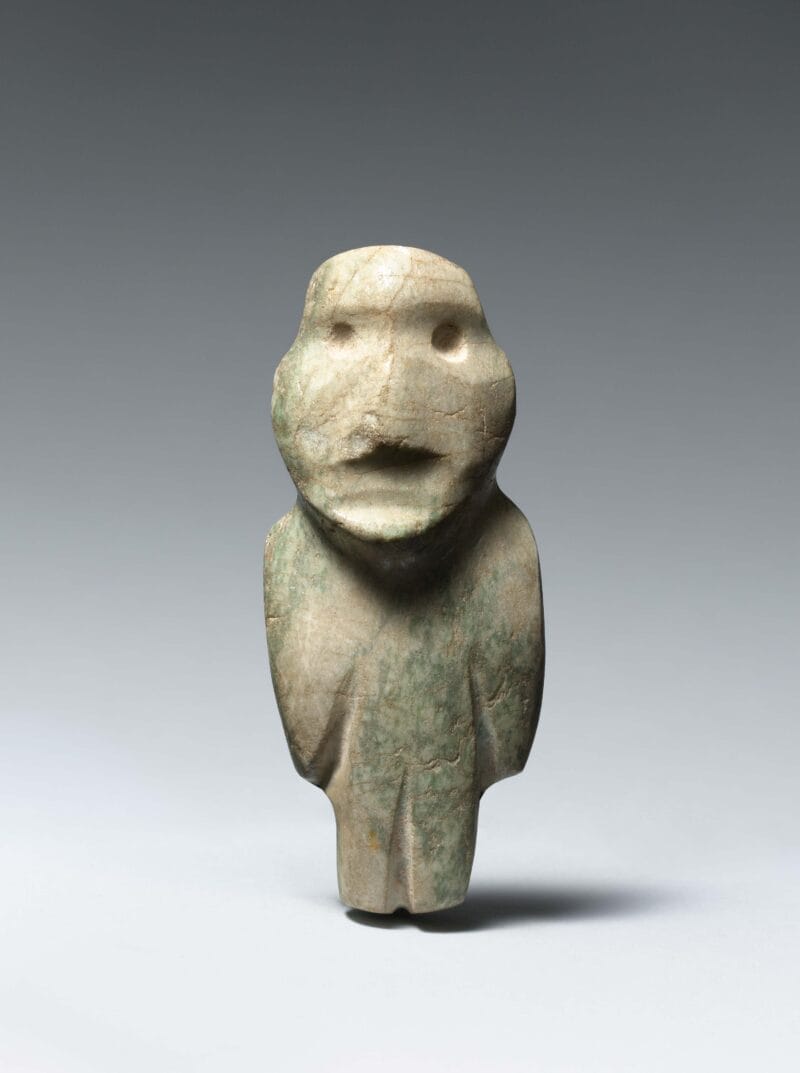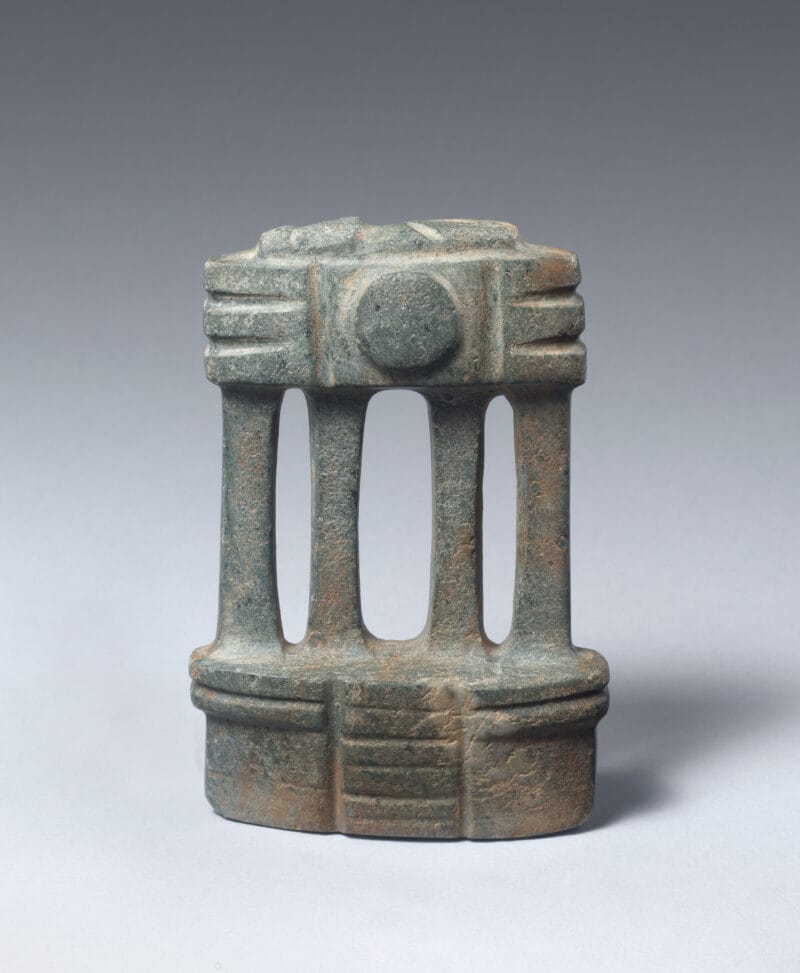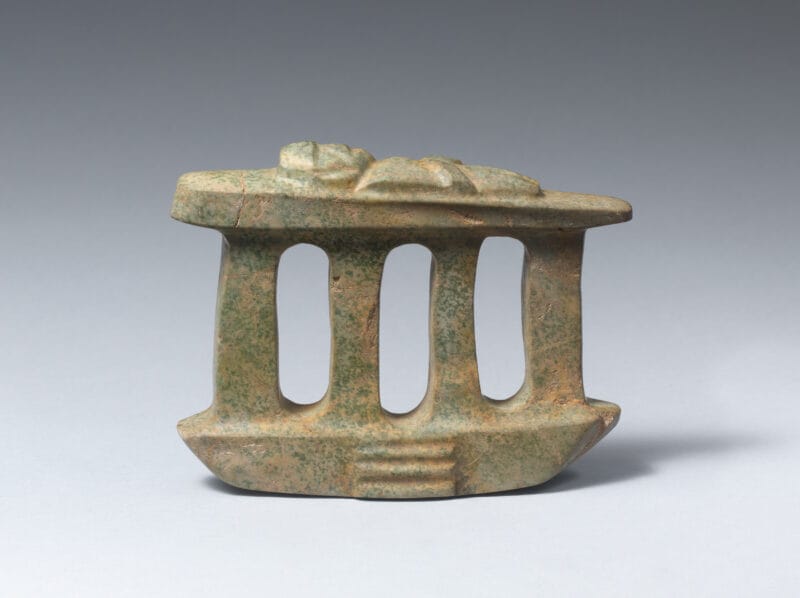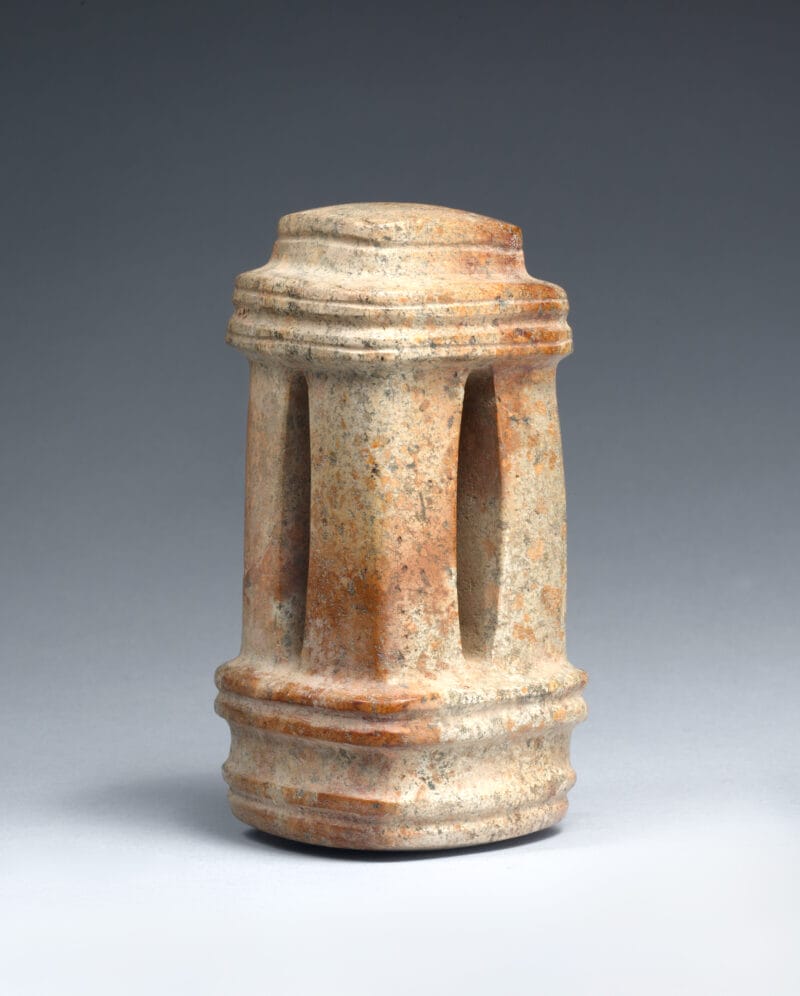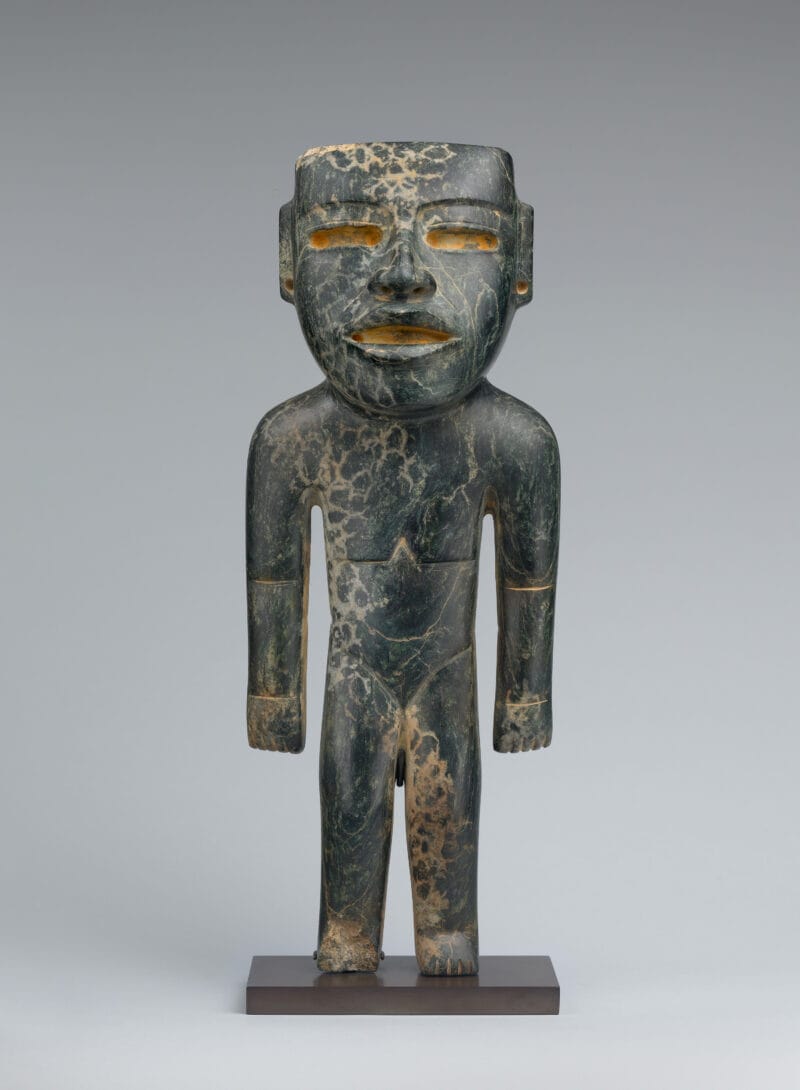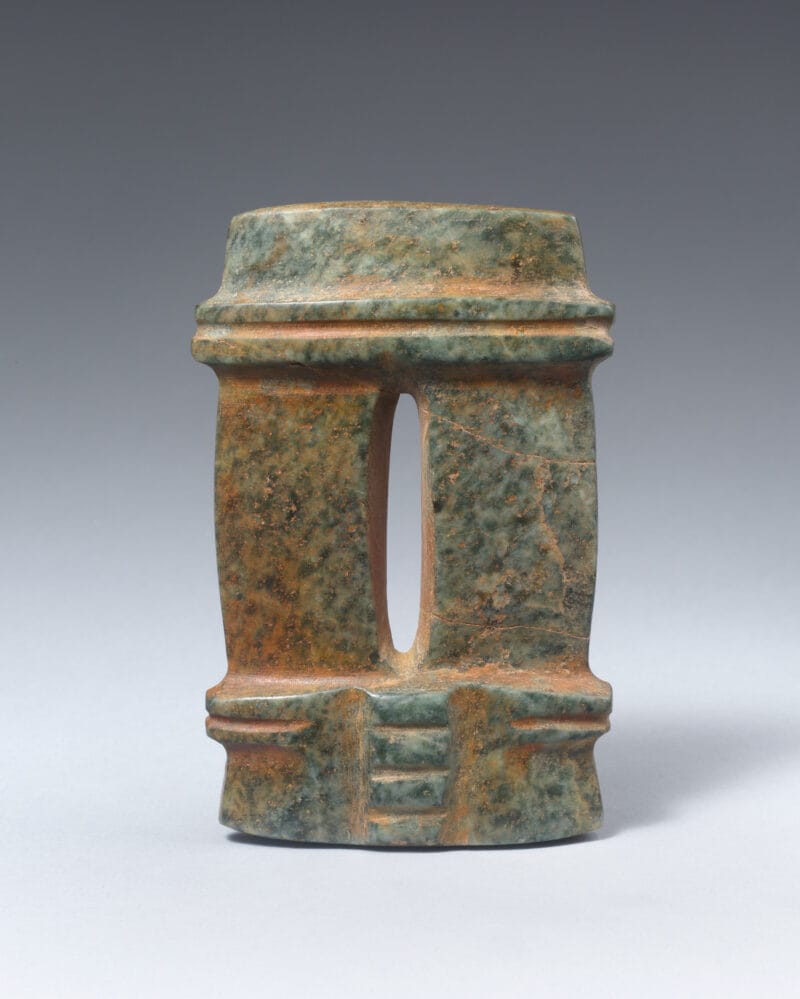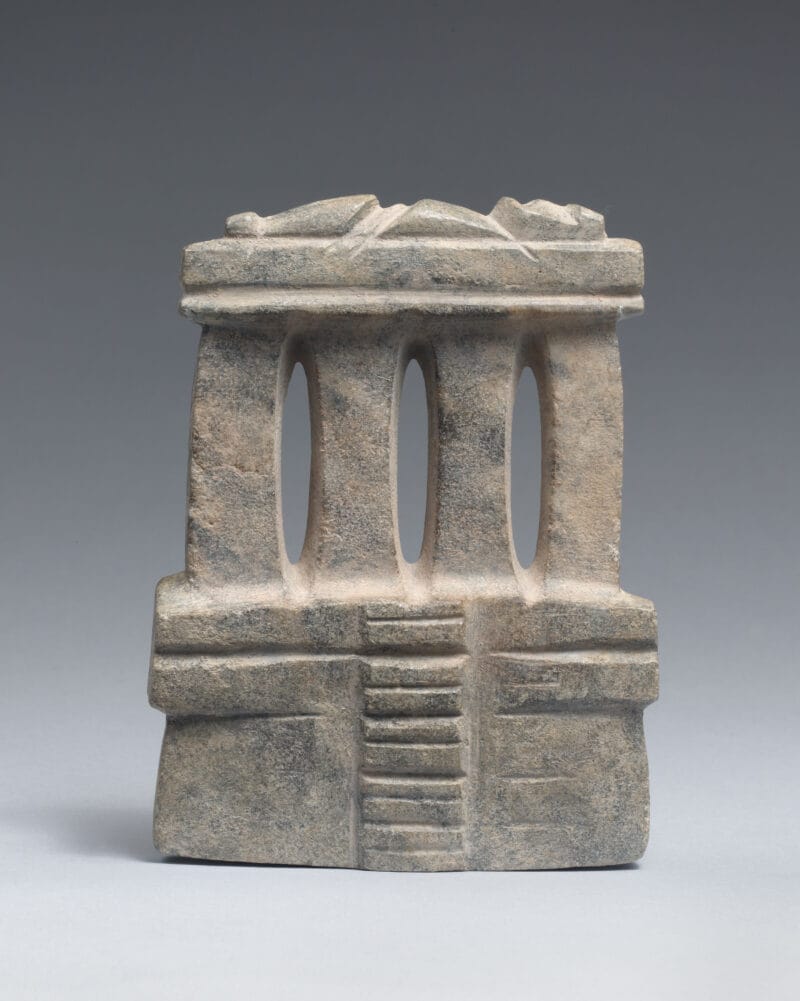
About the Object
This remarkable worked object was fashioned over time by carving a green-gray stone (perhaps calcite) into an abstract four-column temple or architectural form. Here three spaces have been carved out to create the columns and areas worked away to make different levels of platforms. There are also stairs leading up to the top, where a human-like figure lies facing up. The figure is abstracted with typical Mezcala features, including a relatively flat head, prominent eyebrows, and cuts into the rock that form the torso and legs.
Additional Information
The upward gaze of the human effigy figures has led some scholars to label these works “star-gazing” figures. Indeed, they may represent shamans, religious leaders, or other individuals noting astronomical phenomena related to agricultural cycles. Others believe these may represent individuals that were sacrificed to ensure abundant harvests, according to spiritual beliefs concerning human obligations to the gods. These figures may be associated with burials, and the material itself also may have been used to create weapons or other important tools used in everyday life.
[Throckmorton Fine Art, New York, NY];
Related Objects
You may also be interested in
Architect James Leng designs birdhouse for Vilcek Foundation Rooftop
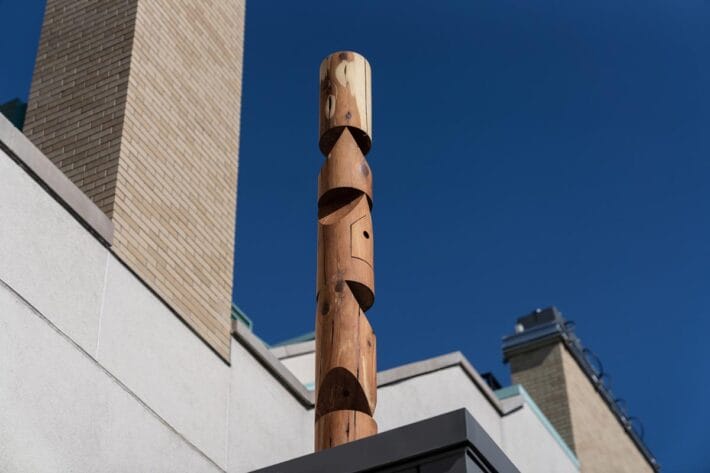
Vilcek Foundation receives 2021 AIA Interior Architecture Award
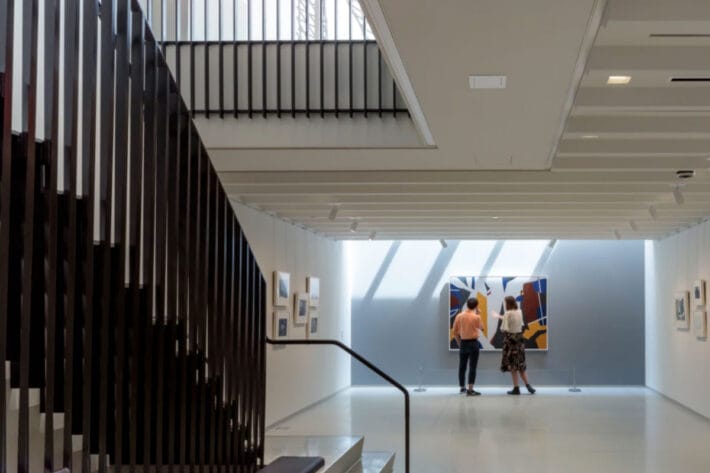
Postmodern pioneer: Manga biography celebrates Denise Scott Brown
